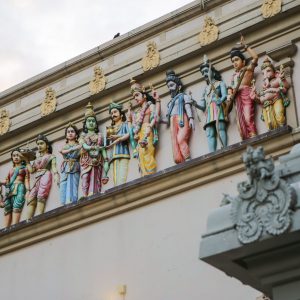‘Mixing and Matching’: The Shape of Everyday Hindu Religiosity in Singapore
November 16, 2020

Deepavali is celebrated by Hindus worldwide every year. Taking place on 14 November this year, it is also known as the Festival of Lights, where colourful light displays are set up to symbolise the Hindu concept of light conquering darkness. In ‘’Mixing and Matching’: The Shape of Everyday Hindu Religiosity in Singapore’ (Asian Journal of Social Science, 2009), Professor Vineeta Sinha (NUS Department of Sociology) focuses on everyday forms of Hindu religiosity in urban Singapore and the free-flowing and intersecting interactions that occur between Hinduism and other religions despite state emphasis on the disparate and bounded nature of religions in Singapore.
Prof Sinha conceptualises everyday Hindu religiosity as a process of ‘mixing and matching’, whereby the practitioner picks, chooses, and enacts his or her preferred style of Hindu religiosity derived from choices in places of worship, symbols, and practices. For example, Prof Sinha notes that the Hock Huat Keng Temple houses both the Taoist deity Tua Peh Kong and the Hindu deity Muneeswaran. In it, devotees from both faiths worship both deities as they are seen to be “brothers” who share many qualities. In the households of her Hindu informants, Prof Sinha also finds prayer rooms that contain statues or pictures of deities ranging across various religions such as Ganesha, Jesus Christ, and the Buddha. The informants see the various deities as having different looks but performing the same divine functions. In terms of practices, Prof Sinha also cites the popularity of seeking consultations with Taoist spirit-mediums, like the Monkey God, among Hindus.
Prof Sinha is sceptical of similar terms like religious syncretism as ways to theorise such religious encounters. She believes that only ‘mixing and matching’ describes everyday Hindu religiosity in Singapore adequately and transparently. Importantly, the encounters between Hinduism and non-Indian and non-Hindu cultural and religious traditions through ‘mixing and matching’ refute the state-sponsored perception of religions in Singapore as having labels, differences, and boundaries that are firm and impermeable.
Read the article here.
